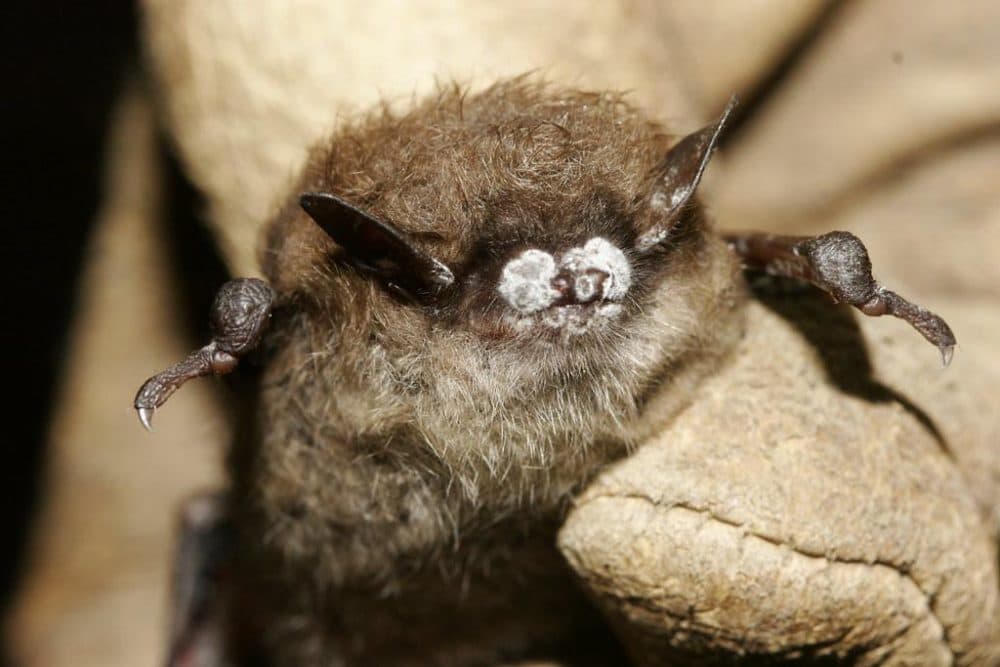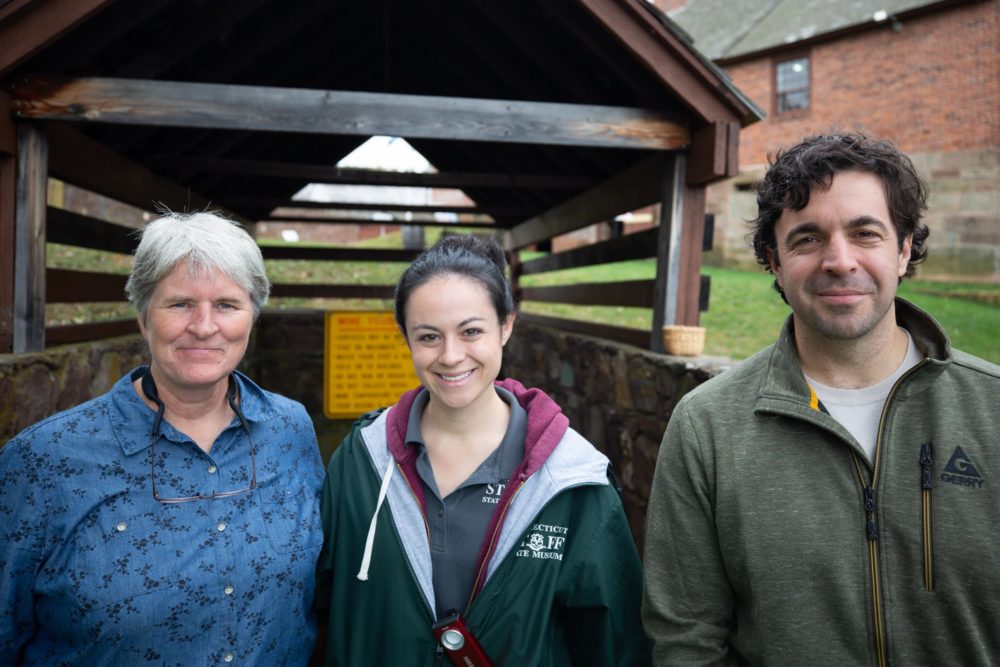Advertisement
For New England Bats, It's Been A Decade Of 'Carnage'

Morgan Bengel stood about 35 feet underground, gesturing at the cold, rocky walls inside Old New-Gate Prison & Copper Mine. Late 18th-century descriptions of this subterranean penitentiary were bleak.
“Some of the words are, hell, a dungeon, woeful mansion,” Bengel said.
You’d think this would be the perfect place to find bats. It’s a dark damp cave. But during a bat survey here last winter scientists only found 10.
That’s because of white-nose syndrome. A disease caused by a fungus, which flourishes in caves, just like this one. The fungus gets on the muzzle and wings of bats, waking them up from hibernation, and depleting the fat they need to survive the winter.
It’s been more than a decade since the disease was first identified in North America. Since then, white-nose has killed off millions of bats across New England and other parts of the U.S. and Canada.
“We have a site in western Connecticut that was over 3,300 bats that we documented during a winter hibernaculum survey in 2007,” said Kate Moran, a wildlife biologist with the state Department of Energy and Environmental Protection. “We returned there in 2009 and there were more like 300 bats. We returned there in 2010, and we counted fewer than a dozen bats. It was carnage, really.”

White-nose was first documented in New York in the winter of 2006 to 2007. Since then, it’s spread to at least 33 states and 7 Canadian provinces, including all of New England. In Connecticut caves, DEEP biologist Brian Hess said it’s virtually everywhere.
“To our knowledge, all of the caves in Connecticut have the fungal pathogen living in them,” Hess said.
Across Connecticut, the numbers of cave-dwelling bats like the northern long-eared bat, little brown bat, and tri-colored bat all dropped dramatically between 2007 and 2010. Moran said they still haven’t recovered.
“In New England bats were very common. The northern long-eared bat was probably the most common bat we had throughout New England. Now it is the least common bat we have in New England,” Moran said.
And it’s listed as “threatened” under the Federal Endangered Species Act.
Bats are beneficial to people. They eat moths and beetles that can pose dangers to crops. And they also consume mosquitoes, which can spread dangerous diseases like West Nile virus and Eastern equine encephalitis.
Advertisement

Bats also live a long time. Moran said up to 30 years. And bats usually only produce one pup per year, which means any recovery will take a long time.
But it’s not all bad news. Hess said that while white-nose syndrome is present in all of Connecticut’s caves, there are spots within those areas where the fungus doesn’t do as well.
“There are little microclimates within caves that can help bats to survive that fungal load, because the fungus doesn’t grow quite as well if it’s warmer or cooler, or more or less humid than the fungus really, really likes,” Hess said.
What the fungus also doesn’t like, is going outside. It doesn’t survive in UV light or in springtime temperatures, so if a bat can make it through the winter, it can still have a shot at recovery.
That means hope for both the bats and the biologists working to conserve them.

“They’re still here. They haven’t blinked out,” Hess said. “When you have these introductions of diseases or pests, things are dire. But the fact that we still have bats is an encouragement and a reason to keep trying … to make sure they still hang around.”
Hess said next year, the plan is to come back to New-Gate, to count bats and try to learn a little bit more about the handful of winter survivors who will awaken from an ecological nightmare.
This story first published on Connecticut Public Radio.
This segment aired on November 7, 2019.